
Are Electric Scooters Allowed on the Sidewalk? Although electric scooters have been around since 1996, they have only recently flooded a number of large American cities. And the numbers are fairly impressive. Bird, the biggest player in the electric scooter rental market, has scooters in dozens of cities at an estimated value of $2 billion. With so many scooters entering the market (and surely that number will grow), it’s important to consider the operating and product quality standards that apply to this mode of transportation.
One of the most frequently asked questions about electric scooters is where you can drive the e-Scooter. Should you drive an electric scooter on the sidewalk, a bike lane, or with the general traffic? A fairly straightforward question, one that should have an equally straightforward answer, right? Unfortunately, it doesn’t.
The answer is . . . it depends.
If you are an avid electric scooter fan, then you probably already know that privately-owned electric scooters are only legal in some countries and certain regions of each country.
Become Familiar With Your Local Laws. Electric Scooter Laws Vary From State to State.
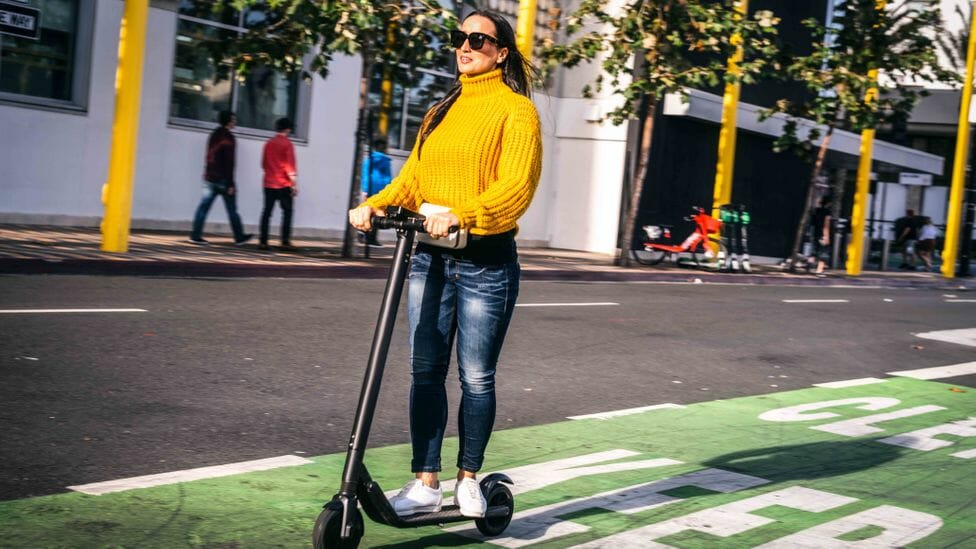
We’ve talked before about the complexities of electric scooter laws in the U.S. You can take a look back at our previous article, “Are Electric Scooters Legal?”, for a detailed look on the subject. But let’s revisit the basics here, with some added bits:
- In California, you can only ride an electric scooter in a bike lane, or on the right-hand side of the road, next to the curb. You cannot ride an electric scooter on a sidewalk. Furthermore, if you are crossing an intersection, you must walk the scooter across.
- In Texas, you can ride an electric scooter on the road with the traffic, in the bike lane (if there is one available), or on the sidewalk. Riding on the road or using the bike lane are preferable over riding on the sidewalk. That said, in Austin, Texas there are some stretches of sidewalk that are off-limits to scooters, so do your research before you ride!
- In Colorado, riding an electric scooter on the sidewalk is the only option. The law considers an electric scooter to be a toy, and therefore scooters are prohibited from riding in a bike lane or with general traffic.
In Washington, DC, riding a scooter on a sidewalk is prohibited when a bike lane is available. You are however permitted to operate an electric scooter on any sidewalk that is overseen by the National Park Service. With such a mish-mash of rules and regulations involved with riding an eScooter, our final advice remains unchanged:
- Check the website of your state Department of Motor Vehicles first. You might be able to find information there, not only about state laws but also local municipalities. Larger cities such as NYC and San Francisco will also have info on the city website.
- If you can’t find it online, just ask the local police. It’s better to talk to them now on the phone rather than after they’ve handed you a citation!
General Laws and Full-Size Electric Scooters. Are Electric Scooters Allowed on the Sidewalk
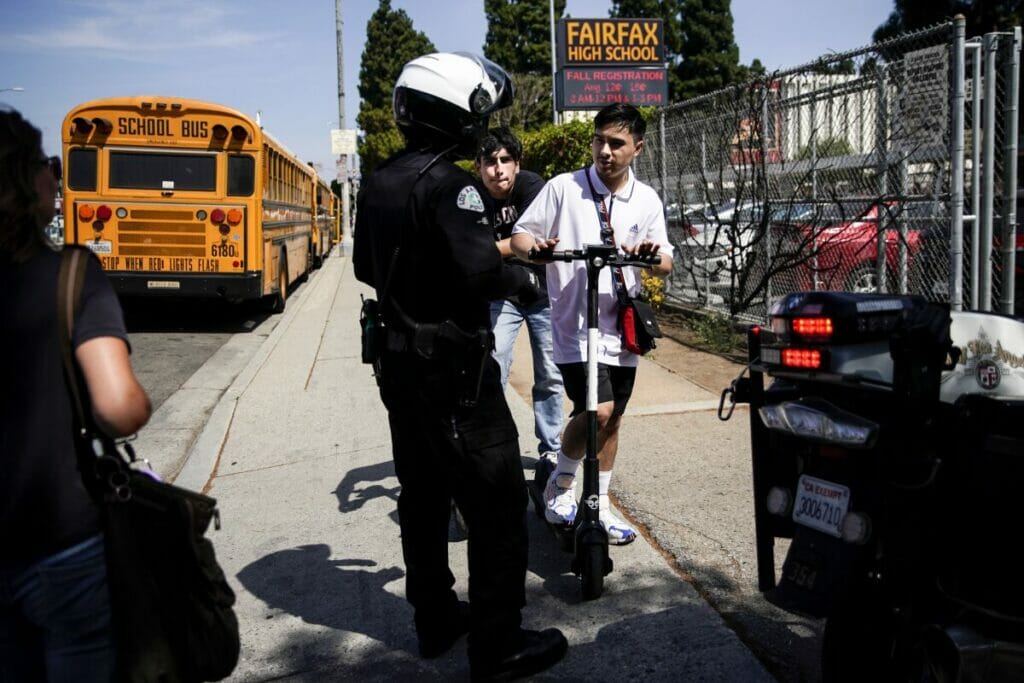
With so much variety, the responsibility is on you to follow the law wherever you are. Fortunately, there are a few general laws that you can expect to be consistent from state to state. For example,
- You are not required to wear a helmet if you are 16 or older.
- At age 16, you are allowed to drive on a public road.
- You also cannot drive a full-sized electric scooter on a sidewalk or bike path.
- A full-sized electric scooter, also known as a street-legal scooter, can travel up to 65 miles per hour and is designed to drive on the road.
- If you are operating a scooter that is 50cc with a top speed of 30 miles per hour or higher, you are required to have a valid driver’s license.
- In addition, annual registration is frequently required for full-sized electric scooters.
Electric and Hand Signals
Whether you are riding your electric scooter on the road or the bike lane, it is important to communicate to other motorists around you. First, consider mounting turn signals on your handlebar. This type of turn signal looks very similar to those mounted on a motorcycle, where the light signal blinks when the rider flips a switch. Do a quick search online, and you’ll find a variety of turn signal models under $15 that are easy to install.
Be advised, not all models of electric scooter are easy to operate one-handed, so hand signals can be problematic. Electric signals are strongly advised in this case.
Rental electric scooters vs privately owned scooters
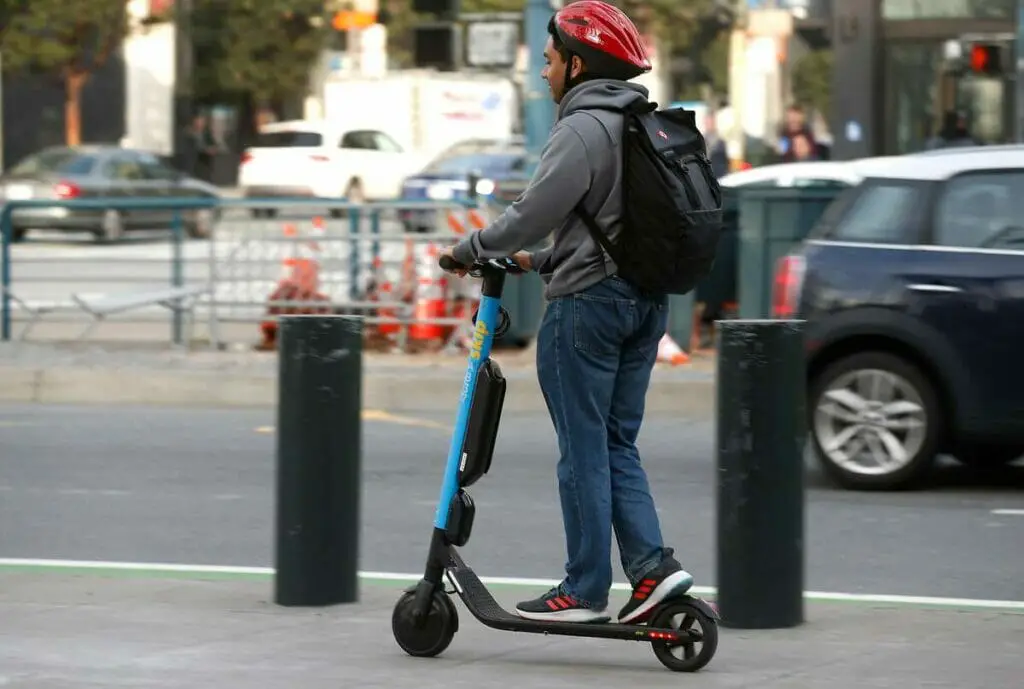
Electric scooters have taken the US by storm, especially public share rentals run by rental companies such as Bird, Lime and Spin. These rentals are authorised explicitly by particular city authorities. Rental electric scooters are highly regulated and have special permission to operate in certain states.
But what about if you want the convenience of owning and using your own electric scooter where you live or work? Unfortunately, the state of electric scooter law is only just beginning to emerge in the United States and varies from state to state and even city to city. To shed more light on the matter, let’s look at an overview of federal legislation.
Federal Consumer Law – Safety Standards

Under the HR 727 amendment of the Consumer Product Safety Act, “low-speed bicycles,” or “two- or three-wheeled vehicle with fully operable pedals and an electric motor of fewer than 750 watts, whose maximum speed on a paved level surface, when powered solely by such a motor while ridden by an operator who weighs 170 pounds, is less than 20 mph” is considered legal. While no equivalent law exists for electric scooters, it’s generally accepted for e-scooters to fall under this category.
E-scooters, therefore, are allowed on roads with or without bicycle lanes as long as they are running under 25 mph. Riders must stay close to the curb and follow driving and traffic rules like driving on the right side of the road, observing traffic signals, and yielding to pedestrians.
Remember that each state has its own set of laws governing the use of e-scooters on public roads. So, You will also need to familiarise yourself with these state-specific rules.
Where exactly are electric scooters “street legal” in the US?
Electric scooters are street-legal in 38 US states, while another ten states have deemed them not to be street-legal. While electric scooters are street-legal in a majority of the states, some states have applied different laws to where and how scooters can be operated while on public roadways.
Four of the states – California, Colorado, Massachusetts, and New York, do not allow scooters on highways, expressways, or limited-access roads due to most scooters not being able to reach safe enough speeds to keep up with the traffic.
Massachusetts, Connecticut, Indiana, Maine, and Virginia have added the stipulation that while scooters are street-legal, they must stay to the right side of the road while being ridden.
States where electric scooters are street-legal
- Alabama
- Alaska
- Arizona
- Arkansas
- California (except freeways/expressways)
- Colorado (except interstate or limited-access roads)
- Connecticut (must stay to the right)
- Georgia
- Hawaii
- Illinois
- Indiana (must stay to the right)
- Iowa
- Kansas
- Louisiana
- Maine (must stay to the right)
- Maryland
- Massachusetts (except interstate or limited-access roads; must stay to the right)
- Minnesota
- Mississippi
- Missouri
- Montana
- Nebraska
- Nevada
- New Mexico
- New York (except interstate or limited-access roads)
- North Carolina
- North Dakota
- Ohio
- Oklahoma
- Pennsylvania
- Rhode Island
- South Dakota
- Tennessee
- Texas
- Utah
- Vermont
- Virginia (must stay to the right)
- West Virginia
States where electric scooters are not street-legal
- Delaware
- Florida
- Idaho
- Kentucky
- Michigan
- New Hampshire
- New Jersey
- Oregon
- Washington
- Wisconsin
Can electric scooters be ridden on sidewalks?
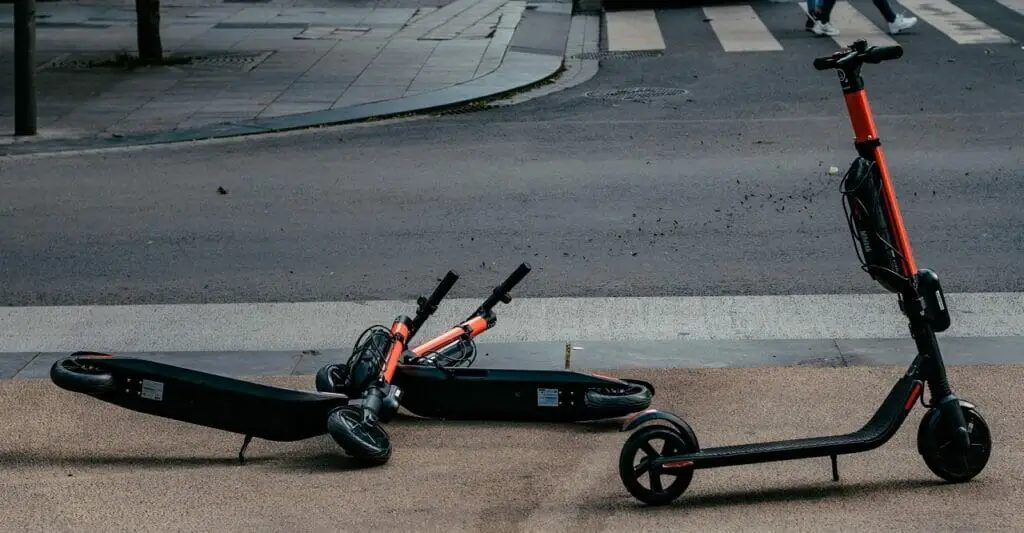
Electric scooters can legally be ridden on sidewalks in only five states: Arizona, Iowa, Louisiana, Rhode Island, and Virginia.
While a majority of the states expressly state that scooters are not allowed on sidewalks, the laws in 19 states fail to mention sidewalk use at all. Many states consider electric scooter speeds to be too dangerous for sidewalks where pedestrians, bicyclists, or even the scooter users themselves could be injured in an accident.
States where scooters can legally be ridden on sidewalks
- Arizona
- Iowa
- Louisiana
- Rhode Island
- Virginia
Rules for streets
You will find that in almost all cases, scooters are not allowed on high-speed streets (streets with a speed limit above 35 mph, for example). However, few scooter riders will want to do this anyway.
And again, only Pennsylvania and Delaware actually ban scooters on streets. You might be surprised to hear that cool niche communities are developing for high-speed scooters, but the majority of people are happy to ride at 15 mph or 20 mph.
Rules for speed limits
Maximum speed is one of the most commonly enforced rules for electric scooters. The most common speed limit is 20 mph, which many may not expect, coming from the shared scooter model where scooters are almost universally regulated at top speeds of 10-15 miles per hour.
Do electric scooters require a license, registration, or insurance?
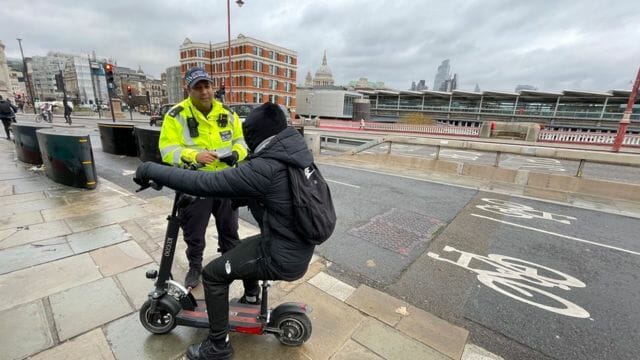
The great news for electric scooters is that they only require DMV registration in one state, North Carolina. Nine states have decided to require driver’s licenses to ride a kick scooter, as well. However, this does not apply to other types of electric scooters or mopeds, which would require a license and/or registration.
Do I need insurance for my electric scooter? In the United States, local and federal transportation agencies do not currently require riders of electric scooters to carry insurance. Riders are only required by law to have a valid drivers’ license. The only places that legally require you to have electric scooter insurance are the state of Illinois in the US the state of Texas in the US if the power of the electric scooter’s motor surpasses 750 Watts.
Nine states have required driver’s licenses to operate an electric scooter to produce some order in the chaos. Still, this method is unlikely to become the norm, given the special power of micro-mobility to give people access to opportunities who cannot afford a car.
Minimum age and helmet requirements

The minimum age for electric scooter riding varies from State to State, although the most common age agreed upon in the nation is 16 years old and above. States like Michigan and Minnesota have an age restriction of 12 and above to ride an electric scooter.
Most states have a minimum rider age of 16, and states also often require a helmet for minors under 18. Others have extended this law to require helmets for all ages, and even if you are not legally obligated to wear a helmet, it is still highly recommended for your safety.
You can get a restricted driver’s license from the age of 16, so it is easy to see why this is the most common age restriction in the nation. To ensure that you are of the appropriate age to use an electric scooter, you need to ensure that you abide by your local and state laws.
When it comes to safety regulations, you should note that it is strongly suggested that you wear a helmet at all times, especially for riders under the age of 18; this law was extended to include the electric scooter and not just mopeds. Therefore, it is expected of you to take the necessary precautions. Even when riding a bicycle, ensuring your safety on the road should be one of your main priorities.
No governing body recommends that a rider not wear a helmet, and quite notably (as is also the case with bicycles), riders are trusted to make responsible decisions for their health and wear a helmet.
Scooter Laws By State
States with the most established electric scooter legislation
It’s fair to say that some states have been quicker than others to pick up on the electric scooter trend and to legislate for it so that people know how and where they can use electric scooters. Let’s take a look at what some US states legislate regarding e-scooters.
Some states have no specific e-scooter laws but class them as motor vehicles; for example, like mopeds, this can entail requirements for insurance and licence, but it may, well in practice, prove impossible to obtain such things.
All of which throws into relief the impressive efforts the following states have made to clarify the legal position of e-scooters and facilitate their daily use. The following states have very clear laws regarding motorised scooters and operating electric scooters.
California
California was one of the first states to respond to the e-scooter craze, and the California Vehicle Code has clear cur rules and regulations that are easy to follow.
Max speed
Most states set their e-scooter speed limit at 20 mph, a few going for 15mph, and California is in the latter camp. CVC §22411 regulates the e-scooter speed, and going over it can result in a $250 ticket.
Are helmets mandatory?
For under 18s only.
Where are they allowed?
E-scooters must be ridden in bike lanes (or bikeways, bike paths, bicycle paths etc.) whenever one is available.
The law only allows for four exceptions to riding in a Class II bike lane:
- While passing another vehicle or pedestrian,
- When completing a left-hand turn,
- To avoid debris or other hazards in the bike lane, or
- When turning right.
They are expressly prohibited from sidewalks and crosswalks.
You cannot operate a motorised scooter on a highway with a speed limit in excess of 25 miles per hour unless the motorised scooter is operated within a Class II or Class IV bikeway, except that a local authority may, by ordinance or resolution, authorise the operation of a motorised scooter outside of a Class II or Class IV bikeway on a highway with a speed limit of up to 35 miles per hour.
The 15 miles per hour maximum speed limit for operating a motorised scooter specified in Section 22411 applies to the operation of a motorised scooter on all highways, including bikeways, regardless of a higher speed limit applicable to the highway.
Do I need a licence and how old must I be?
Operators must be at least 16 years old and have a driver’s license or learner’s permit. Tickets for contravening this are usually around $200.
E-scooters, though, are exempt from registration, and license plate requirements, and, for those purposes, says the vehicle code ’a motorised scooter is not a motor vehicle.
Michigan
Within Michigan, electric scooter riders are classified under the same rules as electric skateboards. They cannot exceed 25 mph, nor can they surpass 2500W of motor power.
Electric kick scooters must stay on streets with a speed limit of 25 mph or less. The scooter should be equipped with a white front light that is visible from 500 ft and a rear reflector visible from 600 ft away.
Are helmets mandatory?
According to Michigan electric scooter laws, only a scooter or electric skateboard operator who is under 19 years of age must “wear a crash helmet on his or her head.” (MCL 257.658(4))
Where are they allowed?
Electric scooters are allowed on public roads but must do the following:
- Drive as far to the right side of the road as possible.
- Not ride more than two abreast.
- Use a designated path when required by a local ordinance to do so.
- Not pass between lanes of traffic. (MCL 257.660(1), (2), (3) and (4))
Unusually you can ride on a sidewalk but must “yield the right-of-way to a pedestrian”, and you must “give an audible signal before overtaking and passing the pedestrian.” (MCL 257.660(5).
Do I need a licence/insurance?
It appears licences and insurance are not needed as only vehicles defined in Michigan’s No-Fault auto insurance law must be covered by licencing and car insurance. Electric scooters do not meet the definition of a “motor vehicle”.
Is there an age limit for riding on electric scooters?
Yes. Under Michigan electric scooter laws, kids under 12 cannot ride an electric scooter or electric skateboard “on a public highway or street.” (MCL 257.658(9)
New York
New York state has had a turbulent history regarding explicit bans of various kinds of electric micro-mobility.
However, as of 2020, riders can once again operate electric scooters that can travel up to 20 mph on the streets of NYC, granted that they’re over 16 years old and wear helmets if they’re under 18.
Main rules and regulations now include the following:
- E-scooters must weigh less than 100lbs
- They can be used on roads with posted limits of 30mph or less and on greenways and bike paths (New York State has over 1200 miles of multi-use trails, which can be used by e-scooters unless locally disallowed). They can’t be used on sidewalks unless locally authorised
- If under 18, helmet wearing is mandatory
- Local municipalities can opt-out / disallow e-scooters
Q: Can electric scooters go on the path?
A: Privately owned e-scooters are only legal to use on private land. You cannot get insurance to ride these in public spaces. This means they CANNOT be ridden on roads, pavements or any public space.
Q: Are scooters allowed on sidewalks Ontario?
A: As for sidewalks, the law explicitly prohibits e-scooters from operating on them because they’re for pedestrians, including persons with disabilities. Other provincial requirements include: Speed: Electric scooters should operate at a maximum speed of 24km/h.
Q: Can you ride an electric scooter on the sidewalk in Texas?
A: In Texas, you can ride an electric scooter on the road with the traffic, in the bike lane (if there is one available), or on the sidewalk.
Q: Why cant you use an electric scooter?
A: Because escooters don’t (usually) comply with road traffic laws – in particular they don’t have rear lights or registration plates – it’s not legal to use a privately-owned scooter on a UK road.
Q: Is it against the law to ride a electric scooter on the pavement?
A: Riders could be at risk of prosecution for a range of offences. Although these are clearly enjoyable to use and in principle we have no desire to put a stop to anyone’s fun, we do wish to draw attention to the fact that riding them on public roads, pavements and cycle paths is currently illegal.
Q: Can scooters go on pavements?
It’s not classed as a road vehicle due to its power and low maximum speed, and so can’t legally be used on public roads. This rule obviously extends to the pavement too, as it would be dangerous to use the same space as pedestrians.
Q: How fast can a scooter go on a sidewalk?
A: You can only drive motorized scooters on a bicycle path, trail, or bikeway, not on a sidewalk, and you cannot exceed a speed of 15 mph.
Q: Can scooters ride on sidewalks Toronto?
A: To answer the question of where you can ride electric scooters in Canada, we will summarise the major cities with related laws here. –You can ride your electric scooter on the sidewalk in Quebec but not in Toronto. – You can’t rent or use an electric scooter for commercial purposes in any city.
Q: Can I ride electric scooter in rain?
A: Instead, electric scooters have varying degrees of water resistance. Many electric scooters are resistant to water splashes and low pressure water jets and others are suitable for heavy rain, high pressure water jets, or even temporary full immersion in water (though we don’t recommend it).
Related Articles
Electric Scooter Maintenance: How to Keep your E-Scooter Running




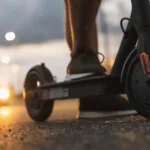
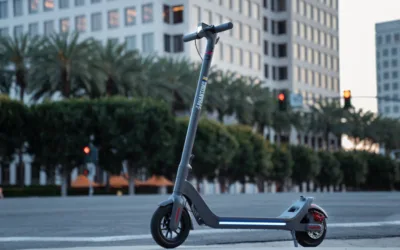
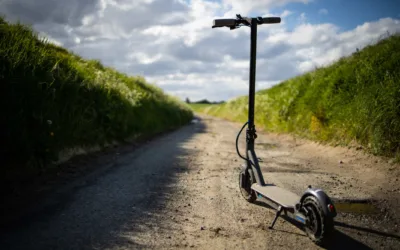

0 Comments